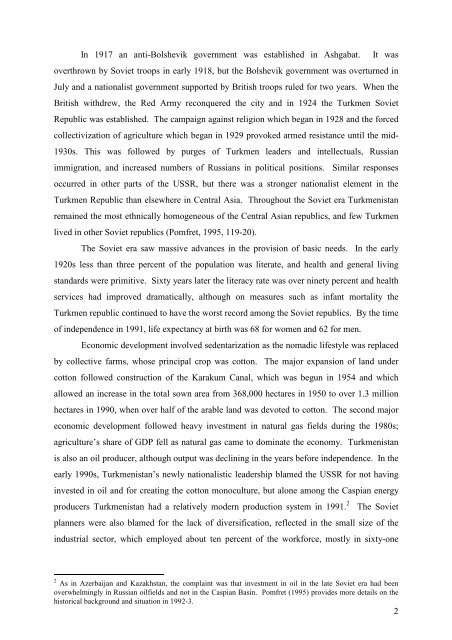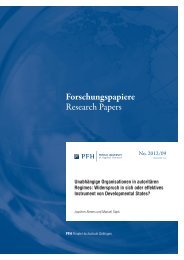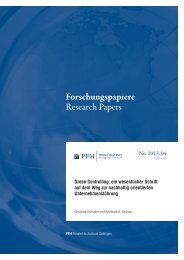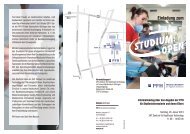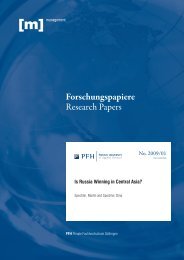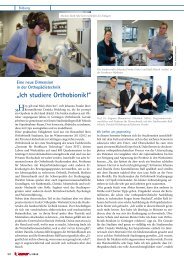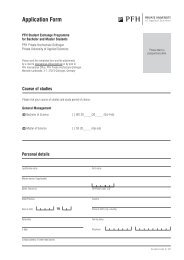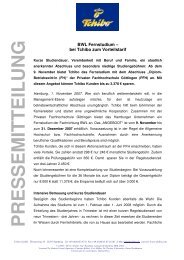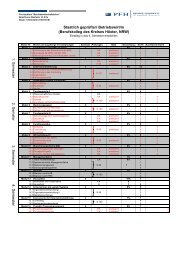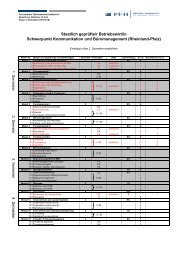Forschungspapiere Research Papers - PFH Private Hochschule ...
Forschungspapiere Research Papers - PFH Private Hochschule ...
Forschungspapiere Research Papers - PFH Private Hochschule ...
Create successful ePaper yourself
Turn your PDF publications into a flip-book with our unique Google optimized e-Paper software.
In 1917 an anti-Bolshevik government was established in Ashgabat. It was<br />
overthrown by Soviet troops in early 1918, but the Bolshevik government was overturned in<br />
July and a nationalist government supported by British troops ruled for two years. When the<br />
British withdrew, the Red Army reconquered the city and in 1924 the Turkmen Soviet<br />
Republic was established. The campaign against religion which began in 1928 and the forced<br />
collectivization of agriculture which began in 1929 provoked armed resistance until the mid-<br />
1930s. This was followed by purges of Turkmen leaders and intellectuals, Russian<br />
immigration, and increased numbers of Russians in political positions. Similar responses<br />
occurred in other parts of the USSR, but there was a stronger nationalist element in the<br />
Turkmen Republic than elsewhere in Central Asia. Throughout the Soviet era Turkmenistan<br />
remained the most ethnically homogeneous of the Central Asian republics, and few Turkmen<br />
lived in other Soviet republics (Pomfret, 1995, 119-20).<br />
The Soviet era saw massive advances in the provision of basic needs. In the early<br />
1920s less than three percent of the population was literate, and health and general living<br />
standards were primitive. Sixty years later the literacy rate was over ninety percent and health<br />
services had improved dramatically, although on measures such as infant mortality the<br />
Turkmen republic continued to have the worst record among the Soviet republics. By the time<br />
of independence in 1991, life expectancy at birth was 68 for women and 62 for men.<br />
Economic development involved sedentarization as the nomadic lifestyle was replaced<br />
by collective farms, whose principal crop was cotton. The major expansion of land under<br />
cotton followed construction of the Karakum Canal, which was begun in 1954 and which<br />
allowed an increase in the total sown area from 368,000 hectares in 1950 to over 1.3 million<br />
hectares in 1990, when over half of the arable land was devoted to cotton. The second major<br />
economic development followed heavy investment in natural gas fields during the 1980s;<br />
agriculture’s share of GDP fell as natural gas came to dominate the economy. Turkmenistan<br />
is also an oil producer, although output was declining in the years before independence. In the<br />
early 1990s, Turkmenistan’s newly nationalistic leadership blamed the USSR for not having<br />
invested in oil and for creating the cotton monoculture, but alone among the Caspian energy<br />
producers Turkmenistan had a relatively modern production system in 1991. 2 The Soviet<br />
planners were also blamed for the lack of diversification, reflected in the small size of the<br />
industrial sector, which employed about ten percent of the workforce, mostly in sixty-one<br />
2 As in Azerbaijan and Kazakhstan, the complaint was that investment in oil in the late Soviet era had been<br />
overwhelmingly in Russian oilfields and not in the Caspian Basin. Pomfret (1995) provides more details on the<br />
historical background and situation in 1992-3.<br />
2


